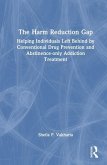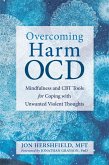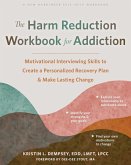Inhalant addiction is a troubling and often overlooked form of substance abuse that affects individuals across various age groups, but particularly adolescents. Inhalants are substances that produce chemical vapors, which can be inhaled to induce a mind-altering effect. These substances are found in common household products, such as glue, paint thinners, gasoline, and aerosol sprays, making them easily accessible to young people. The allure of inhalants lies in their ability to produce a quick and intense high, often described as euphoria, dizziness, and a sense of detachment from reality. This immediate effect can be enticing to individuals seeking a rapid escape from their problems or curiosity-driven experimentation. However, the seemingly harmless act of inhaling these substances can quickly lead to physical dependence and addiction, as the brain becomes accustomed to the pleasurable sensations they produce. Inhalant addiction can have severe and long-lasting effects on the body and mind. Physically, the chemicals in inhalants can cause damage to vital organs such as the brain, heart, liver, and kidneys. Chronic use can lead to irreversible cognitive impairments, memory loss, and motor skill deficits. Inhalant abuse also poses a significant risk of sudden sniffing death syndrome, where the heart stops beating due to the toxic effects of the chemicals. Psychologically, inhalant addiction can lead to a range of mental health issues, including anxiety, depression, and hallucinations. The short-lived high often leaves individuals in a state of desperation for the next inhalation, leading to a cycle of repeated use and increasing the risk of overdose. The constant need to obtain and use inhalants can also result in neglect of personal responsibilities, social isolation, and strained relationships with family and friends. The social impact of inhalant addiction is profound. It often leads to behavioral changes, such as aggression and antisocial behavior, as individuals become more focused on obtaining and using the substance. The stigma associated with inhalant abuse can further isolate individuals, making it difficult for them to seek help. Additionally, the accessibility of inhalants in everyday household products means that the issue often goes unnoticed or unaddressed, leading to a lack of awareness and intervention. CONTENTS: - Understanding Inhalant Addiction ◦ Defining Inhalant Addiction ◦ Different Types of Inhalants >- The Science behind Inhalant Addiction ◦ How Inhalants Affect the Brain ◦ Long-term Physical Effects of Inhalant Abuse >- Identifying Inhalant Addiction ◦ Signs and Symptoms of Inhalant Use ◦ Recognizing Common Inhalant Usage Paraphernalia >- The Social Impact of Inhalant Addiction ◦ Inhalant Use among Youths ◦ The Influence of Socioeconomic Factors on Inhalant Abuse >- Prevention of Inhalant Addiction ◦ Prevention Strategies for Teens ◦ School and Community-based Prevention Programs >- Intervention Strategies for Inhalant Abuse ◦ Initial Steps for Intervention ◦ Clinical Approaches for Intervention >- Treatment Options for Inhalant Addiction ◦ Inpatient and Outpatient Treatment ◦ Medication and Therapies for Treatment > + MORE
Hinweis: Dieser Artikel kann nur an eine deutsche Lieferadresse ausgeliefert werden.
Hinweis: Dieser Artikel kann nur an eine deutsche Lieferadresse ausgeliefert werden.








